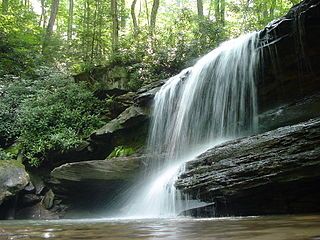From Guest-Blogger Natasha Risinger: Support Your Favorite Alternative Energy Initiatives Through Electric Choice
For people who wish to live greener and be less financially dependent on society, the American market at least gives people the advantage of many options. A person living in many areas can choose who provides their electricity. If there are several power plants around, then customers can decide who they want to spend their money on. Just as people listening to music can sponsor one artist over the other, electricity consumers can decide to patronize greener solutions.
Some Energy Sources Pollute More than Others
Human beings have found many creative ways to make electricity, ranging from dams to coal plants and nuclear plants. Each leave their footprint on the earth, although most people figure they cannot live without power. Electricity runs our modern appliances and also keeps us warm in cold weather. In comparison, our recent ancestors had to burn wood or coal in their homes to provide warmth. This released soot and fly ash into the city. Modern coal plants pump out large amounts of carbon dioxide, but the soot and fly ash are scrubbed out and even recycled as a building material. Many power plants burn petroleum, adding to our dependence on fossil fuel.
Why Nuclear Power is Not Perfect
For a long time, energy advocates promised that uranium and plutonium could eliminate the need to burn coal. Nuclear power plants need large quantities of water, but do not release any carbon dioxide. There is no fly ash, because the only thing coming out of the wide smoke stacks is water vapor. While nuclear plants eliminate the mass release of toxins into the environment, plutonium and uranium eventually get too hot to be used. They must go through an expensive cool down cycle that can last for years. If spent nuclear fuel is not cared for, it can release radioactive particles into the environment. Compared to coal, the cost of operating a nuclear plant is enormous.
Dams are a Mixed Case
Many regions use hydroelectric dams to provide electric power. A handful of dams such as the Hoover Dam provide two thousand megawatts of power each. Dams do not need any specific resources except for a continuous supply of water, and they have the side benefit of creating wetland habitat and controlling flood water for people. They require less maintenance and less money than most other ways to generate power, but they are not problem free. Dams can create a great deal of organic matter which releases carbon dioxide. Dams block rivers and silt accumulates over time. If the water of a dam drops down too low, then it cannot generate power.
Solar Power and Wind Turbines
Some cities are experimenting with alternative energy. They take advantage of solar energy and wind turbines, exploiting the natural windiness of their area. Places with high elevation or near the sea can expect a steady stream of wind. This is sufficient for towns, and wind turbines can supplement the electric need of metropolitan areas. Solar panels take a lot of energy to make, but new ideas such as mirror arrays are creating new potential.
Putting It Together For You
Whether an energy source is good or bad for the environment depends on the practices of the company. Some coal plants do a lot to keep their act clean while some electric dams disregard wildlife. In areas where multiple sources of power are available, it pays to do research and see what company practices are. If none of them work for the consumer, then it is always possible to take charge and generate at home. The law allows this, and many power companies will actually pay people who run a surplus.
Author bio
Natasha Risinger blogs about energy. Her articles appear on various sites including business related blogs and eco blogs. Visit http://www.texaselectricityproviders.com/business-electricity-texas/Texas/for business electricity rates.


In some places, power customers can choose their source of power. Generally one of those choices is renewables. I would strongly endorse providing such options IF customers would receive power only when their chosen option is actually producing power. Thus, if they chose to receive power from renewables, they should receive power only when the renewables are actually producing power. If they want power continuously, they could instal their own back-up system, presumably batteries, a battery charger, and an inverter.
Consider the increase in jobs that such a provision would provide. With tens of thousands of power customers ordering back-up systems, people would have to be hired to manufacture batteries, battery chargers, and inverters.